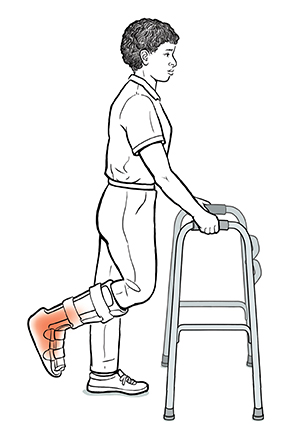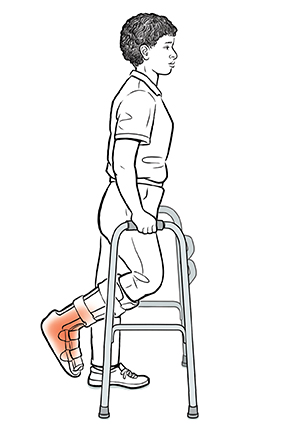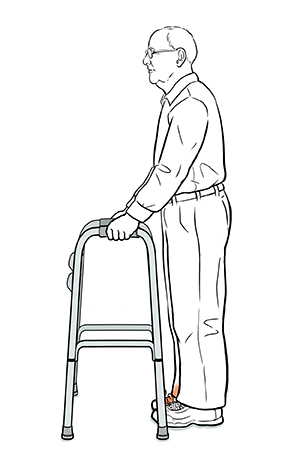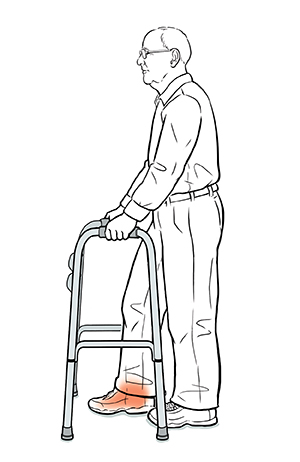Discharge Instructions: Using a Walker
Your health care provider has prescribed a walker for you. To use your walker, you need to learn a new way to walk. The way you walk is called your gait. Your health care provider may tell you to use a non-weight-bearing gait. This means putting no weight on the affected leg and foot. Or they may tell you to use a weight-bearing gait. This means putting weight on both legs and feet.
Guidelines for use
Here are some general tips:
-
Remove small rugs, electrical cords, and anything else that may cause you to fall.
-
Arrange your household to keep the items you need handy. Keep everything else out of the way.
-
Use a backpack, fanny pack, apron, or pockets to carry things so you keep your hands free.
Non-weight-bearing gait
To walk with this method:
-
Hold your affected (weaker) foot off the floor.
-
Lift the walker and move it one step or a few inches ahead of you. If you're using a wheeled walker, roll it.
-
Support your weight with your hands by gripping the top of the walker.
-
Swing your good (stronger) foot forward to the center or middle of the walker.
-
Repeat the process.


Weight-bearing gait
To walk with this method:
-
Lift the walker and move it one step or a few inches ahead of you. If you're using a wheeled walker, roll it.
-
Support your weight with your hands by gripping the top of the walker.
-
Step forward to the center or middle of the walker with your affected (weaker) leg first. When taking a step, don't step all the way to the front of the walker.
-
Use the walker to help you keep your balance as you take the step.
-
Bring your other foot forward to the center of the walker.
-
Repeat the process.



© 2000-2025 The StayWell Company, LLC. All rights reserved. This information is not intended as a substitute for professional medical care. Always follow your healthcare professional's instructions.